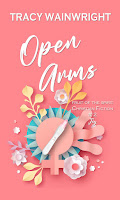Good luck plant since the leaves look similar to clover, During March, Oxalis plants are often sold in cute planters as "Lucky Shamrock," or "Giant Shamrock" for Patrick's Day houseplants. Purple leave varieties also exist, but they are not as hardy as the green and do not have as fast of groundcover growth rate. There are also variegated leaf options and larger flowering options of Oxalis available in some areas. Many of these plants may also be sold under the name "Wood Sorrell" since that is the plant species.
Short URL for sharing = https://tinyurl.com/5ax7jt2r
Sinple spreading Oxalis is a bulb-based plant, so it is easy to start with a few plants to eventually cover a larger area. Simply dig up the mounding clump the next year it comes up and there will be lots of little bulbs along the root to divide for new plants. Remove any greenery still on the bulb balls because leaves disappear for awhile after replanting or leaves can mold if storing bulbs to plant later. Bulbs can be stored for months in a paper bag and will still produce plants even if they dry out somewhat, unlike most other bulbs. Separate the bulbs from each other by tearing them apart where they are grown together strung along a base root. The ballish bulbs may be as big as 1-inch or as small as 1/4" to reproduce.
Involve kids as children may have fun helping replant the bulbs after an adult has dug and divided them. Simply give a school-age child a bag, bowl, or bucket of bulbs and show them how to push the balls into soft or damp ground until they are covered over with soil. No new hole digging needed! Since each Oxalis plant will have a mounding habit of up to 6-inches high and a diameter of about 8-inches (4" each direction from bulb), the child can use their foot to measure a distance for each ball to be placed apart by putting their heal over the last one pushed in and then pushing the next ball into the ground in front of their toes! Tell them a pattern to make, such as straight line, zig-zag, or circle rippling out from center. Then just wait until the plants start popping up and remind them they did the planting.
Warnig! Do NOT let kids or pets chew on or eat the bulbs, leaves, seeds, or flowers of any Wood Sorrell plants. They are pretty, yet toxic if ingested. However, toxicity does not stop deer, rabbits, and other animals from snacking on the plants when no other greenery is available. I have never had a sensitivity issue with the bulb variety, but others might so consider that when choosing to plant. Also note that in some states seed-bearing (not bulbs) Wood Sorrell is considered a weed because of its quick spreading and disease/pest resistant nature.











